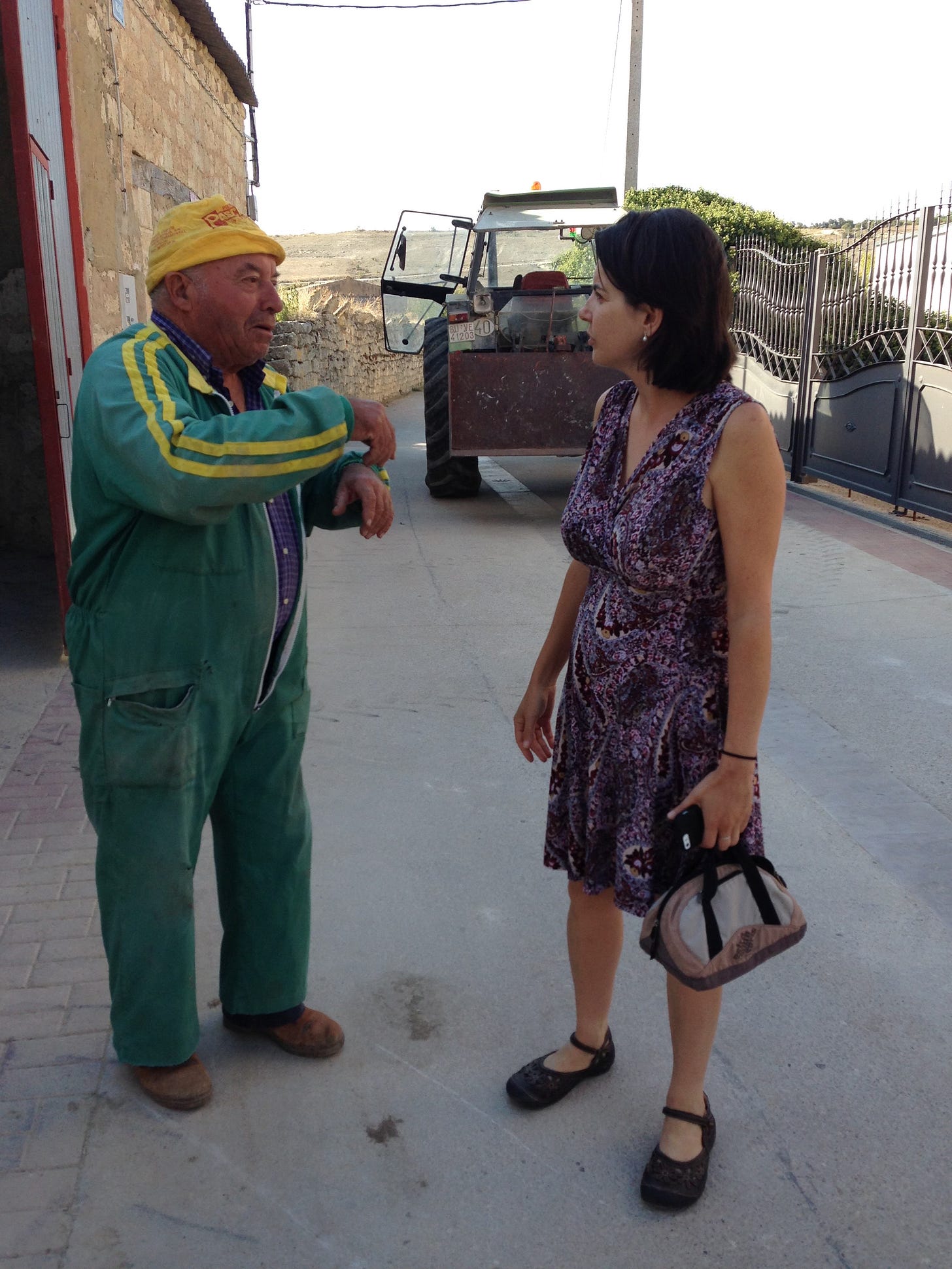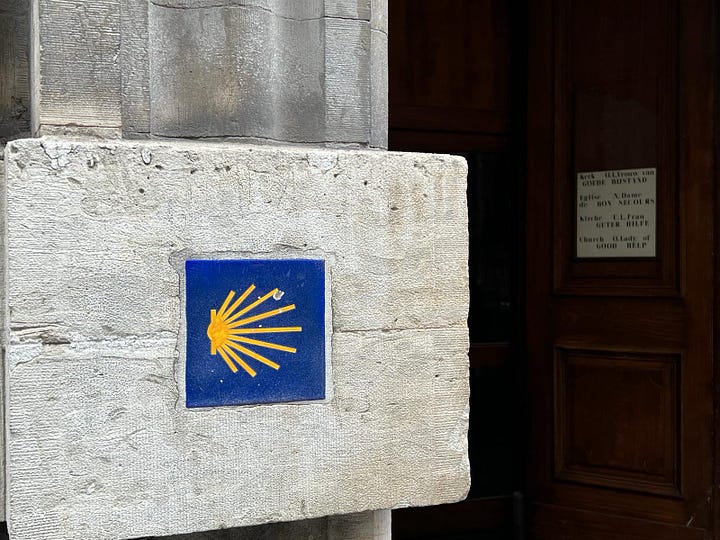018: Choosing Your Camino Route, Part 4: When No One Speaks English and Nothing Goes as Planned
Can You Handle the Unexpected—and Ask for Help in Spanish?
Hello Camino friends! Here’s what’s in this issue:
📚Earlier Posts in this 4-part Series
🗣 Choosing Your Camino Route, Part 4: When No One Speaks English and Nothing Goes as Planned
📸Scenes from the Camino: Trail Markers Outside of Spain
🎥 Join me and my guests live on Substack
🥾How to get help planning your Camino.
Are you getting my posts directly to your email or Substack feed? If not, click here to join us.
Let’s get started!
📚 This is the last in a 4-part series on choosing your Camino de Santiago route. As I’ve said before, if this is all too overwhelming for you, just pick a route and go. There is no perfect route. The Camino gives you exactly what you need.
Missed earlier posts?
Part 1: Ending Point, Daily Distance, and Trip Length
Part 2: Company, Terrain and Getting There
Part 3: Weather and Time of Year
🗣Choosing Your Camino Route, Part 4: When No One Speaks English and Nothing Goes as Planned
❓9) Do you speak Spanish? Will you learn basics before you go? Are you comfortable not being able to communicate in your own language?
DO NOT assume everyone on your Camino will speak English. In fact, on any trip you should never assume the local people will be able to speak your language.
I highly recommend you learn some Spanish basics before your Camino. It will endear you to a lot more people and will help you in more ways than you can imagine.
Maria Seco is a great resource—she specializes in teaching Spanish to those going on Camino. And I’m delighted to say she’ll be joining me live here on Substack on July 30 at 11am EST! (See below.)
If you’re nervous about your level of Spanish, walk the:
Camino Portugués
Camino Francés
You’re more likely, though certainly not guaranteed to meet English speakers or bilingual English/Spanish walkers on these routes. DO NOT expect that you will have someone to help you with the language barrier when you most need it.

🎓How I Learned Spanish:
**My goal was/is fluency as I live in Spain. Maria Seco (see above) will certainly get you what you need for the Camino. But if you want to learn on your own, here’s how I did it.
Dreaming Spanish — This is, by far, the thing that helped me the most and also kept my interest longest (2.5 years and counting!) No grammar, no memorizing, no homework. Based on the “comprehensible input” method.
Pimsleur — The first 30 lessons. No grammar. No memorizing. You learn in the context of conversations.
Spanish with Paul — The first 6 units. I wanted to learn about how the language works. If you have a similar interest, this will help. Though it got boring after a while.
🌀10) How comfortable are you being out of your comfort zone?
A recent client, while in the midst of his first Camino, told me, “If you like routine and don’t adjust to change, the Camino isn’t for you.” After further discussion, we realized that perhaps the Camino is just what people entrenched in a routine do need.
But you know yourself best. On the Camino:
Your accommodation might not offer breakfast.
Or they don’t serve it til 9am and you want to start walking at 7.
Or they serve a typical Spanish breakfast of coffee and toasted bread with jam or tomatoes, and you’re used to eggs any way you like them.
And tomorrow? Who knows. . . as you stay in a new place each night.
Dinner at 5? Not a chance. A doctor who speaks English? Rarely. A 24-hour hotel front desk ? In the big cities, yes (though not guaranteed), but certainly not on the entire Camino.


What The Camino Really Looks Like
You may think the Camino is walking a nice forested trail. And yes, that’s true. Sometimes.
But you’ll also walk:
On packed dirt farm roads
Across what seems like miles of rocks of every possible size
Beside highways or on secondary roads (sometimes with cars that seem to be going way too fast)
Through tiny Spanish towns that seem like ghost towns—or through major cities
Past vineyards, factories, locals walking to work or walking their dogs, and much, much more.
I’ve done 12 Caminos and I still face the unexpected—even if I’m on a route I’ve done three times before!
💡Is the Camino for You?
If you’re not comfortable out of your comfort zone, you have to decide: are you up for a wildly different experience that, when it’s over, most people count as one of the most amazing things they’ve ever done?
It’s true: the Camino isn’t for everyone.
But really? I think it is for almost everyone.
Stretch yourself. Go.
With love,
Rebecca
This concludes my 4-part Choosing Your Camino Route series. Click here for Part 1, Part 2, and Part 3.
And if you want to hear more about the Camino de Santiago, subscribe below.
📸Scenes from the Camino: Trail Markers Outside of Spain
Did you know the Camino is not just one route? It’s a network of pilgrimage trails across Europe. I am lucky to have friends who send me Camino trail markers whenever they see them during their travels.
L to R and Top to Bottom: Krakow, Poland; Metz, France; Luxembourg; Brussels, Belgium




Photo Credits: Rosalina Woolard and Lisa Harrison
🎥Join me for live interviews here on Substack!
For now, just mark your calendars. More info will come in subsequent newsletters.
Wednesday, July 9, 11-11:45 EST: Tim Wesolowski — In April, Tim completed the Camino Portugués from Tui, Spain.
Wednesday, July 30, 11-11:45 EST: Maria Seco of Spanish for the Camino
Wednesday, August 13, 11-11:45 EST: Hana Maris — Last August, at age 65, Hana walked the Camino Primitivo.
🥾Ready to start planning your Camino?
Rebecca Weston is an American who walked her first Camino in 2012.
She helps people 45 and over plan their own walks on the Camino de Santiago through her business The Camino Calls.
She and her husband live in Spain in a town of 6500 people on the Camino del Norte. She’s walked more than a dozen Caminos, spent many days volunteering along the trail, and if she’s not walking one now, she’s planning the next—and would love nothing more than to help you plan yours, too.



See you soon 😉
A real business ...👍